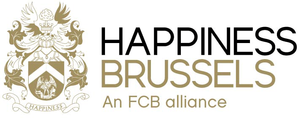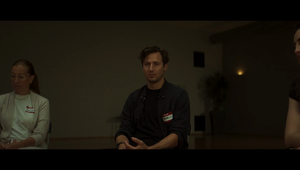
What Is ‘Normal 2.0’ and How Can Brands Be Prepared for What Consumers Want When It Arrives?

Creative agency Happiness Saigon has a zeal to create campaigns that trigger emotions and therefore trigger business. Bearing that in mind, the company’s co-founder and CEO Alan Cerutti is harnessing his experience in advising businesses to guide them through the next few months in what he refers to as ‘Normal 2.0’.
For Happiness, ‘Normal 2.0’ is a reflection of a recovering economy and recovery of businesses depending on their means to connect with consumers in an effective way. The business advice to brands is, “don’t go back to your previous marketing and communication plan, instead adapt it on the basis of what you have learned while continuing to tap in the power of creativity to build value into the brand.”
There’s no doubting that the effects of Covid-19 have not been easy for anyone, but it’s this discomfort that Alan believes drives progress. A recent study by KANTAR found that only 8% of consumers believe brands should stop advertising. The recession caused in the wake of coronavirus should be seen as an opportunity to drive progress for brands and corporations that put the right mix of action, creativity and experimentation into their communications.
By referring to the SARS outbreak in 2003, Happiness have created a model to consult how brands can behave across three phases of the Covid-19 outbreak: outbreak and crisis, initial recovery and new normal.
Luckily the first phase is behind us, but Alan believes this has pushed brands to shift from “ads to acts” as opposed to shutting down communication altogether. He believes consumers have shifted their spending behaviours greatly since the outbreak and now is the time for brands to alter their messages in line with this. He adds: “I see consumers becoming more health and wellbeing focused and in need of digital detox. I see the rise of trust: recent studies show that consumers are three times more likely to research products before buying. I foresee that there will also be a trend to buy ‘local’ to ignite the local economy”.
Now that many economies are in the process of the second phase, their ‘initial recovery’ is starting. Alan goes back to the ads not acts perspective to help brands through this stage – along with the correct balance of creativity. He says: “Brands and corporations are made of human beings, so the majority of brands have stopped communication and did not really actively adapt to this. The brave brands have moved from ‘ads to acts’ and I think this is a trend that will stay because it builds trust; these brands will be remembered after the [inevitable] recession. The new opportunity is for brands to demonstrate that they see a positive future. This is rewarded by consumers, they buy into it”.
What of the consumer habits? Are these here to stay or will they revert back to their old ways? Alan is adamant that, as the outbreak has pushed us all out of our routines with consumers, finding new ways to adapt and create new routines. He previously mentioned a focus on health and wellbeing but also foresees conscious consumption choices that have a positive impact on society and the planet.
Alan leaves us with a final insight on what brands can do right now for consumers. “Invest. Now is the time to gain market shares. Do it right, invest in the power of creativity for your communication and in exceptional consumer service. Find a good balance between ‘ads & acts’ and make sure their communication is positive and optimistic towards the future”.













